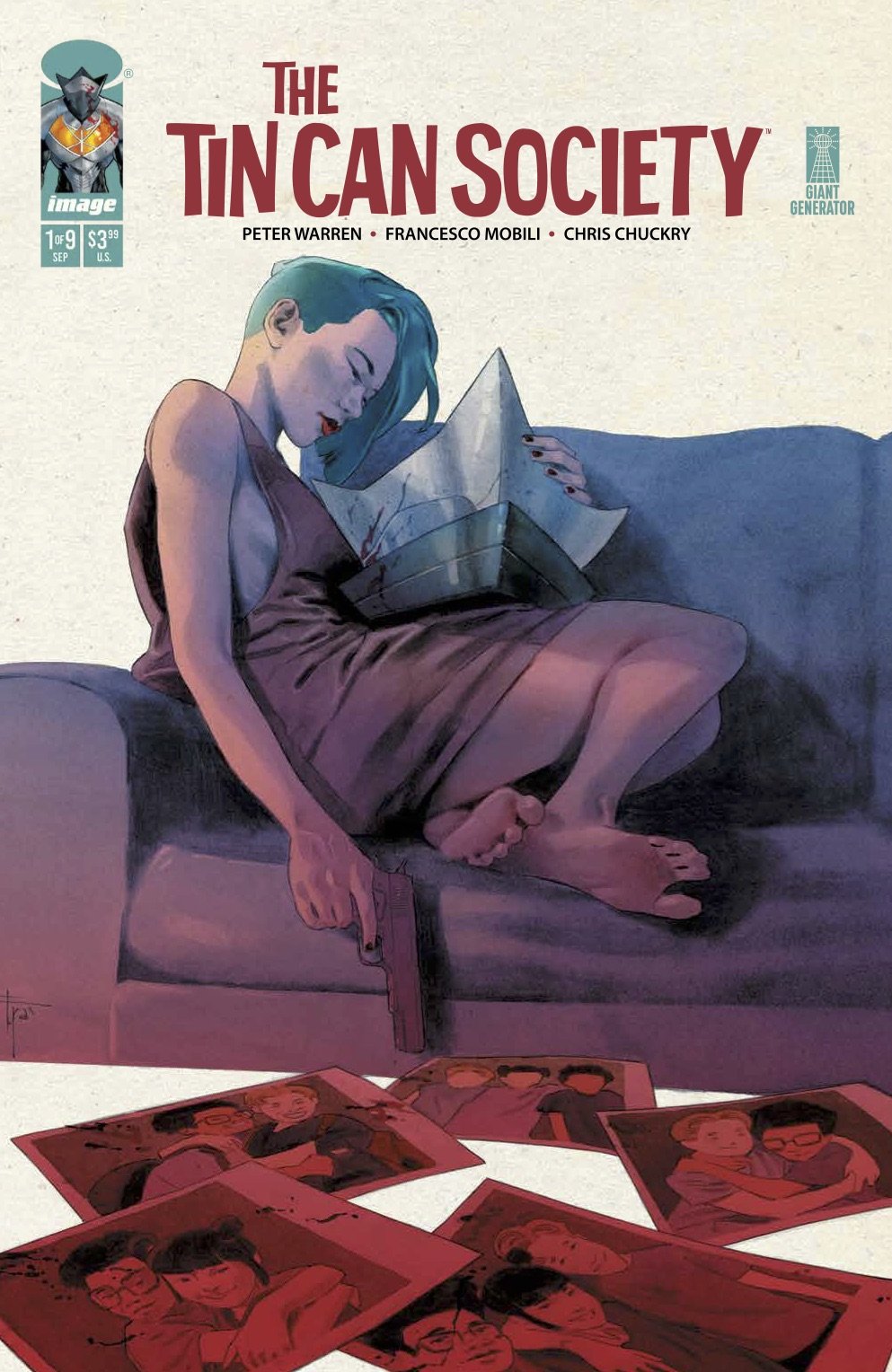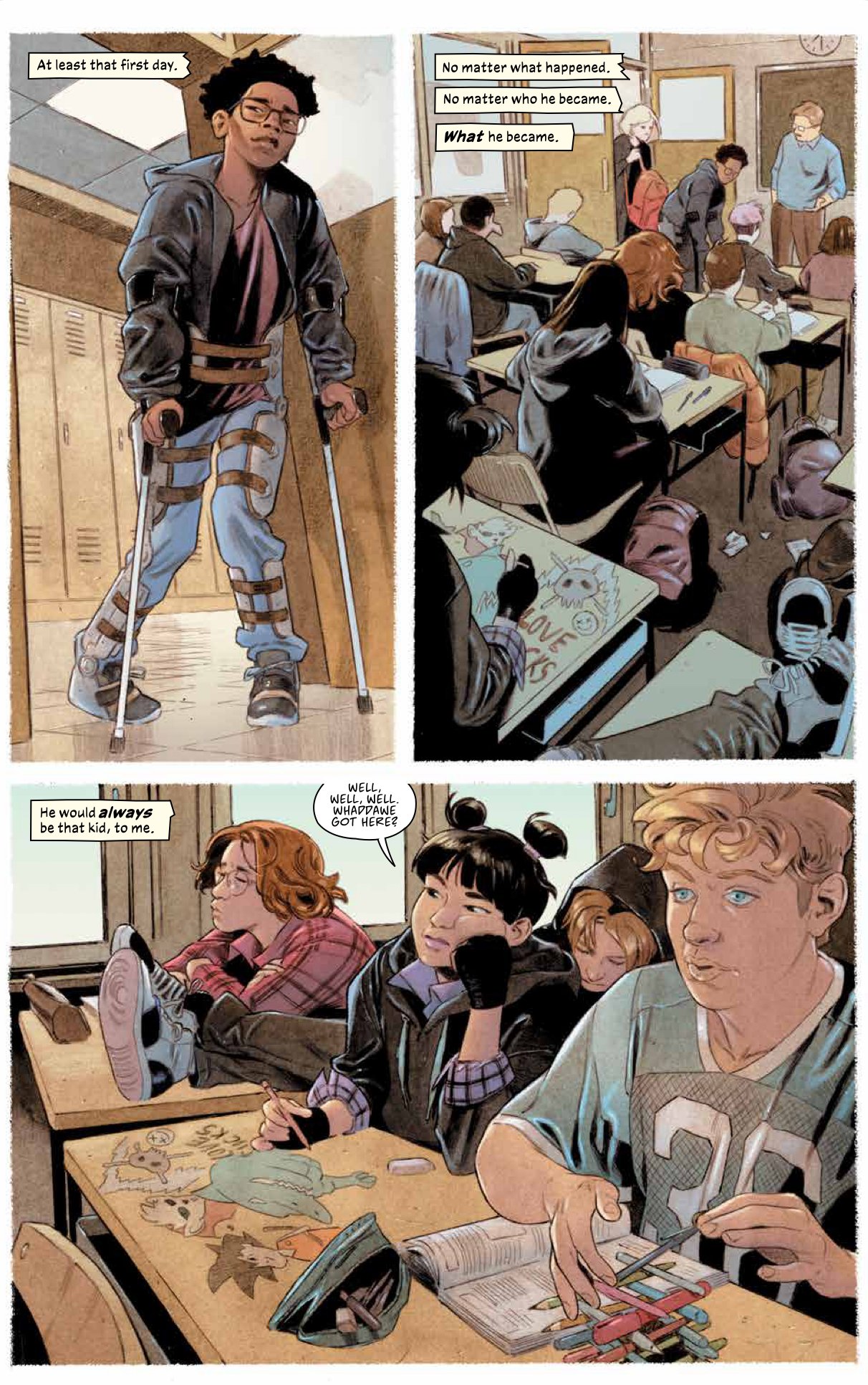Tin Can Society #1: What Brings People Together
Creative Team
writers: PETER WARREN with RICK REMENDER
artist: FRANCESCO MOBILI
colorist: CHRIS CHUCKRY
letterer: RUS WOOTON
publisher: IMAGE COMICS
Reviewed by Seth Adrian Romo
The Tin Can Society #1 debuts a captivating murder mystery that reunites old childhood friends in the wake of the loss of their friend Johnny Moore.
Reminiscent of classics like IT or The Goonies, there is a sense of nostalgia that immediately draws readers into its narrative. Additionally, this character-driven issue takes its time in connecting readers with the group of friends.
Johnny, a tech mogul whose upbringing drove him to use his mind to solve his need for crutches, has been killed and the motivation appears to be very personal. Now equipped with technologically enhanced legs, Johnny’s demise is obviously a calculated occurrence.
It’s critical to note, this is not an easy story and requires the right state of mind to truly appreciate the tale presented. Written by Peter Warren (story by Peter Warren & Rick Remender), the commentary and layers may sometimes feel a bit heavy-handed, but it all serves a purpose in the script.
Kasia (the lead whose point of view the comic book is told from) isn’t a detective, but her skills as a photographer allow her to get access to crime scenes and this catapults her to talk with the remaining members of the “Tin Can Society.” Though the conversations are brief in this issue, there is enough nuance in the dialogue to convey the rich history among friends.
Illustrated by Francesco Mobili and colored by Chris Chuckry, the art does a lot of heavy lifting as time shifts between modern day and early school days when the group first met Johnny. This visual storytelling is fluid and never takes the reader out of the moment. Rather, it adds depth to the scene such as facial expressions and details such as food on the table in the school cafeteria.
It’s unclear where this issue is headed—especially after certain tech-powered skills are unveiled—but regardless there is something exciting with this story.
Final Verdict
This series premiere offers a satisfying buildup that doesn’t rush readers, but encourages moments of pause to soak in the narrative and the small details within the panels.
| Criteria | Score |
|---|---|
| Writing | 9.0 |
| Story/Plot | 8.0 |
| Art/Line Work | 9.0 |
| Colors | 9.0 |
| Final Score | 8.8/10 |


